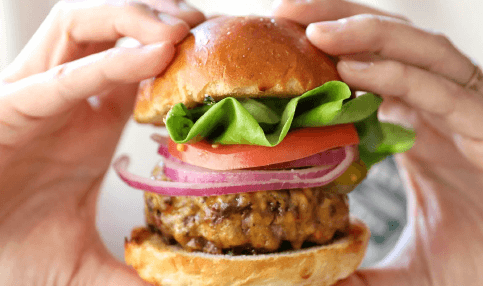
Cell Cultured Meat
Scale up lab-grown meat production using cell line development techniques
What is cell cultured meat?
Cell cultured meat, also known as cultivated meat, cultured meat, or lab-grown meat, involves cultivating animal cells in controlled environments to produce muscle tissues that mimic traditional meat in taste, texture, and nutrition. Cultured meat (CM) is a product of cellular agriculture, an emerging technology that uses these tissue samples to grow sustainable, humane meat in a bioreactor – an alternative to the traditional farming industry, and crucial to supply the increasing meat demand while being more environmentally and animal friendly. Because cell-cultured meat is made with animal cells, many processes for developing and scaling a cell-cultured meat product will mirror those in biologics production, specifically cell line development.
Molecular Devices has a history of success in scaling biologics for regulatory approval and commercialization with life science groups worldwide, and can leverage that expertise with food manufacturers growing animal cell lines in new industries.
Is cell cultured meat approved?
In June 2023, the USDA FSIS granted label approval and grant of inspection to two U.S. companies manufacturing cell-cultured meat: Upside Foods and Good Meat. This was the final step in the U.S. regulatory process, opening the door for the California-based companies to sell their cultivated chicken products commercially in restaurants.
- Upside Foods and Good Meat Gain USDA Approval to Sell Cultivated Meat
- Cultivated, Plant-Based Meats vs. Animal Proteins
- Cell Cultured Meat: Where Are We Now?
Justin Dranschak, director of BioPharma, says the USDA ruling “not only legitimizes this new kind of food production but also creates a visible regulatory pathway for other companies in the field. It encourages scaling up production, attracting more investment, and thus expansion of facilities,” he says. “With other companies like BlueNalu and WildType developing some unique products, this will help push the industry into approvals for other models like fish.”

Scale cultured meat production with monoclonal cell lines

Animal cells are usually engineered to produce different biologics, including growth factors, hormones, and antibodies that are commonly used as therapies today. Cell line development workflows consist of a multistep process involving single-cell cloning, formation and isolation of these discrete colonies, and the phenotypic characterization of these colonies. Monoclonality verification is crucial from a quality and regulatory perspective to ensure that the desired characteristics from the colony of cells originate from a single cell.
Once the desired traits are isolated and cloned, the growth or scale-up process becomes crucial for sustainability. During the scale-up process, it is important to maintain productivity and genetic stability, and robustness of the cells, which requires optimization of culture conditions. Once you have established composition, specificity, and a detailed manufacturing process, safety tests must be conducted before approval and commercialization. The entire process of going from animal tissues to cultured meat products described above is time-consuming, labor-intensive, and prone to error if done in a manual fashion.
Learn more about our research methods
Here, we highlight various applications and research methods using our CloneSelect Imager and Single-Cell Printer, ImageXpress Cellular Imaging System, and SpectraMax® microplate reader to help scale your cell line development workflow.
Cell culture meat workflow solution
As the global population rises and the demand for protein surges, cultured meat offers a sustainable, ethical, and efficient solution. Molecular Devices is proud to be a trailblazer in this transformative journey, equipping pioneers with the tools and expertise to redefine the future of food.
Workflow: Cell Cultured Meat


Animal tissue collection
The process starts with a small biopsy from a live animal, typically taken from muscle tissue. This is cruelty-free and doesn’t harm the animal.

Single-cell isolation
Individual cells are isolated from the tissue. These cells have the potential to grow and differentiate into muscle tissues.
https://vids.moleculardevices.com/watch/2dDXoDw8pL2dHFbYC2jdoQ
DispenCell Single-Cell Despenser
The DispenCell™ Single-Cell Dispenser revolutionizes single-cell isolation by utilizing advanced microfluidics technology to accurately control the dispensing of individual cells.
https://vids.moleculardevices.com/watch/WwWUddqbVhBk8jtmGQ6dHF
CloneSelect Imager FL
CloneSelect Imager FL adds high contrast multichannel fluorescent technology in addition to the standard white light imaging that allows for accurate single-cell detection and proof of monoclonality at day 0.

Monoclonality verification and growth optimization
The isolated cells are cultivated in a controlled environment. With the CloneSelect® Imager, the best single-cell clones are identified and further cultivated. This step ensures that the cells have the optimal growth charachteristics

Characterization and Safety Assessment
As the cells multiply and form muscle tissue, their growth and characteristics are monitored using the SpectraMax® microplate reader. This ensures that the meat produced meets the desired quality and nutritional standards.
https://vids.moleculardevices.com/watch/JWr597wiRf19F3cCUq8T4A
SpectraMax Reader and Cell Imager
The use of a microplate reader with an imaging cytometer, like the SpectraMax i3x plate reader and SpectraMax MiniMax™ 300 Imaging Cytometer, allows for the characterized production of secreted factors or other markers on the surface or within the cloned and grown tissue and to assess safety.